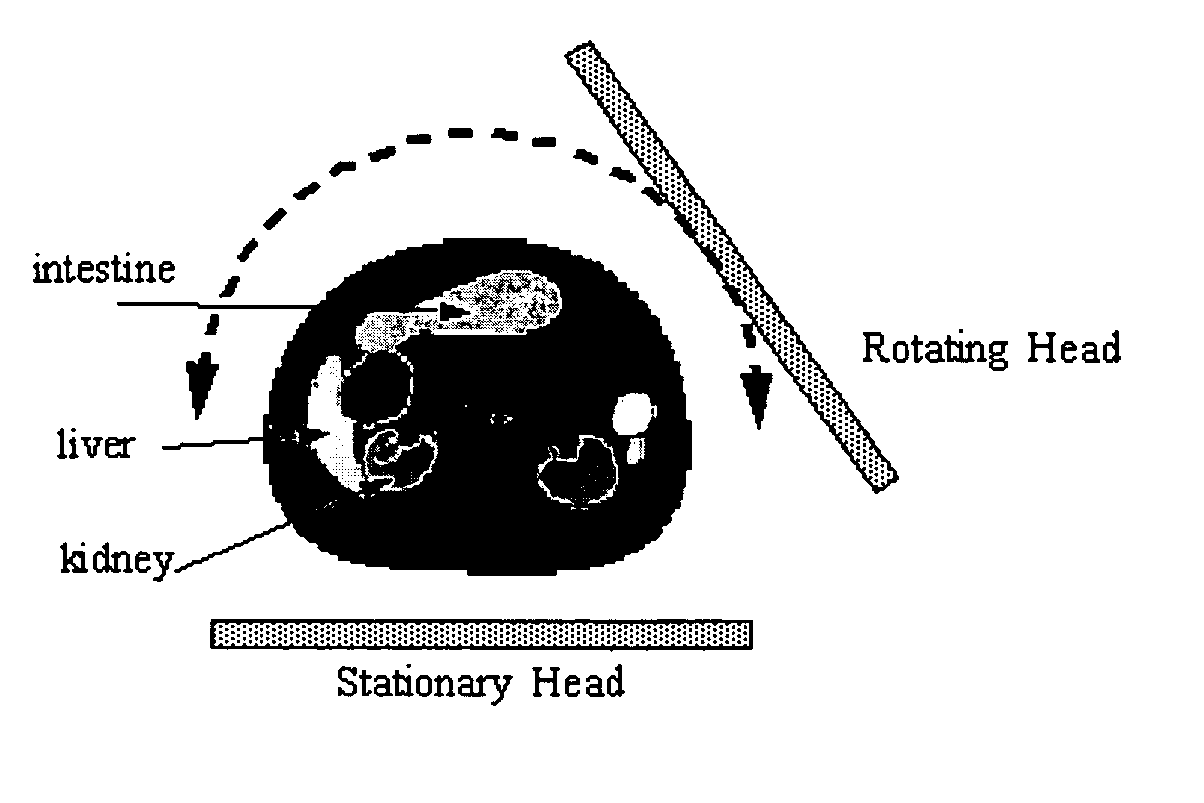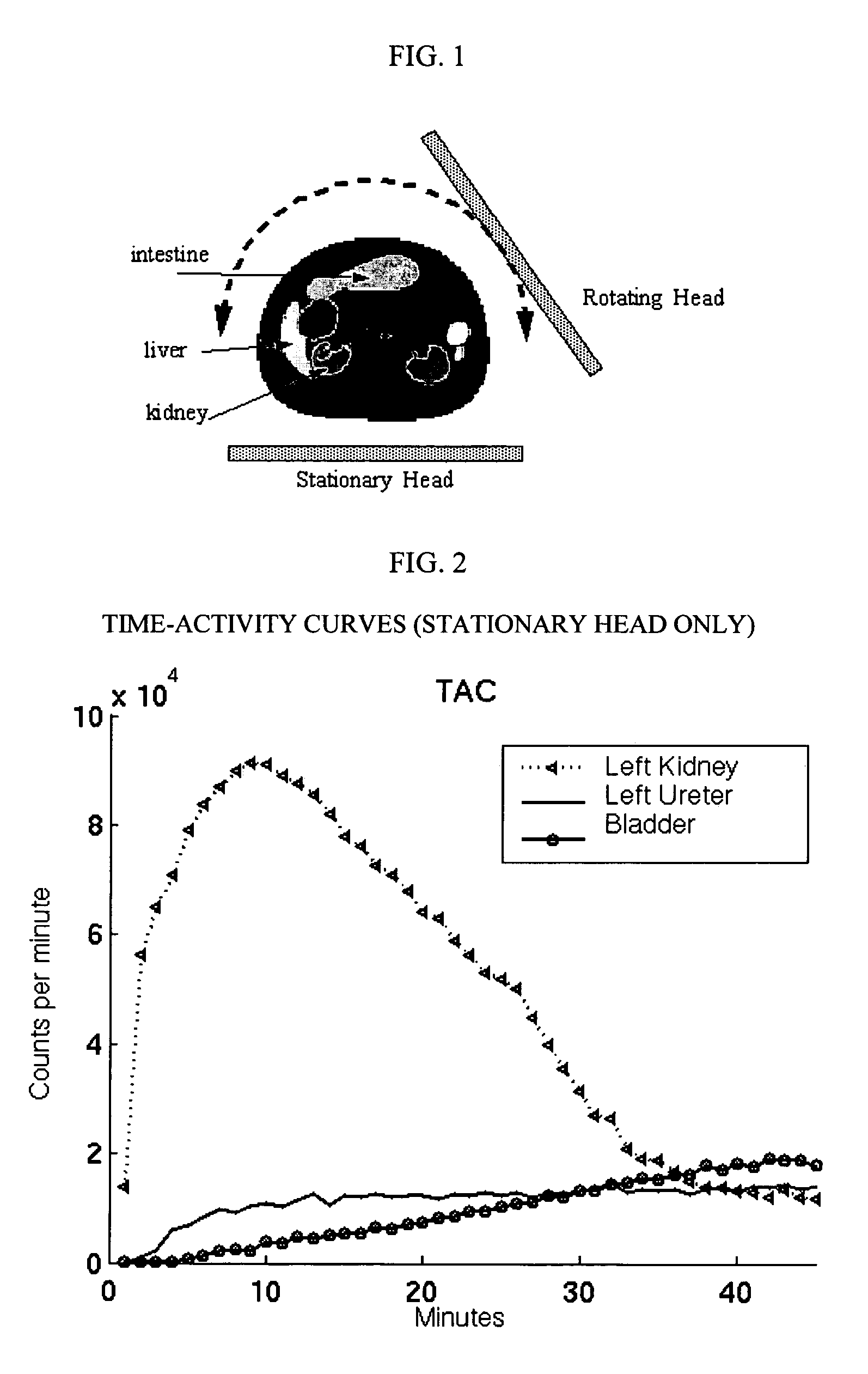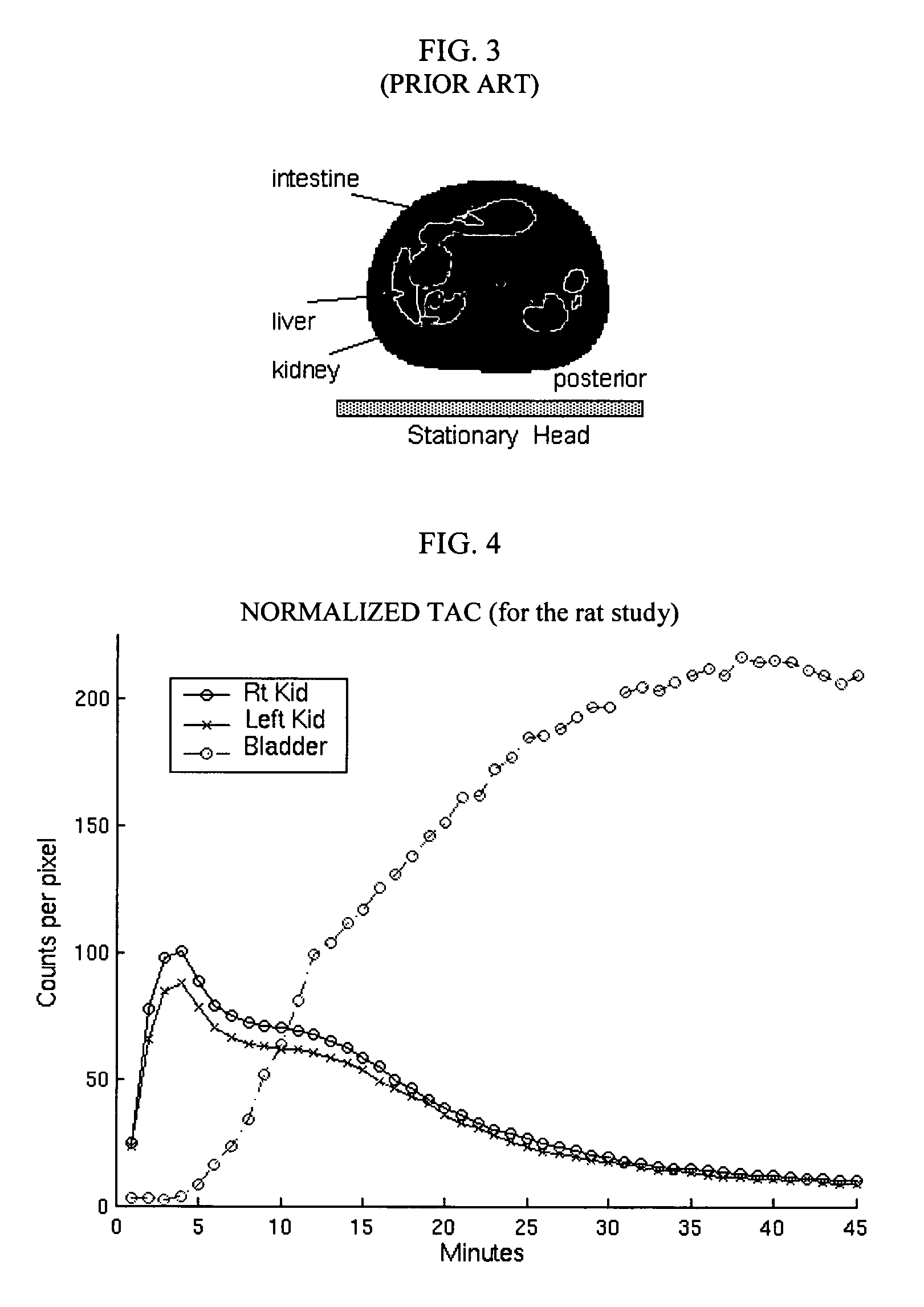Fast dynamic imaging protocol using a multi-head single photon emission computed tomography system
a computed tomography and dynamic imaging technology, applied in the field of nuclear imaging systems, can solve the problems of affecting the quality of the image obtained, further restricting the amount and activity of radiation available, and limited radioactive agents
- Summary
- Abstract
- Description
- Claims
- Application Information
AI Technical Summary
Benefits of technology
Problems solved by technology
Method used
Image
Examples
Embodiment Construction
[0046]The invention was driven by a desire to develop a nuclear imaging systems capable of quantitative imaging that can provide better resolution obtained in a reasonable amount of time and without the use of additional radiation. The invention aims at improving the design and construction of the multi-head imaging single photon emission computed tomography (SPECT) system. This system can be used for screening natural (e.g., humans, animals, plants, etc.) and artificial objects, e.g., in nuclear medicine applications for screening or diagnosing. The invention is not limited to SPECT systems and can be used with PET and CT systems as well as other nuclear imaging systems.
[0047]The invention can be used for any applications where currently planar images are acquired, e.g., the study of obstructive uropathy, lung imaging, bone scans, imaging of the thyroid and brain. Now with multi-head scanners becoming very common the second and third head are literally lying idle or very little inf...
PUM
 Login to View More
Login to View More Abstract
Description
Claims
Application Information
 Login to View More
Login to View More - R&D
- Intellectual Property
- Life Sciences
- Materials
- Tech Scout
- Unparalleled Data Quality
- Higher Quality Content
- 60% Fewer Hallucinations
Browse by: Latest US Patents, China's latest patents, Technical Efficacy Thesaurus, Application Domain, Technology Topic, Popular Technical Reports.
© 2025 PatSnap. All rights reserved.Legal|Privacy policy|Modern Slavery Act Transparency Statement|Sitemap|About US| Contact US: help@patsnap.com



